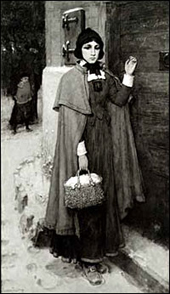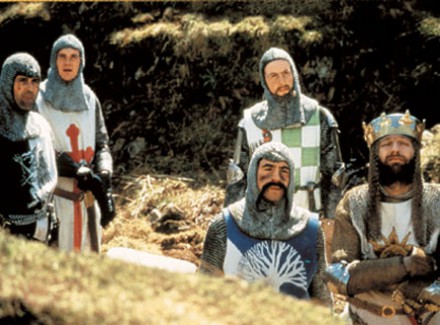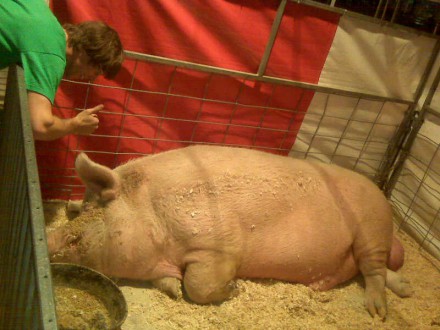Every Sunday, I’ll print an excerpt from the upcoming book Seven Deadly Sins. Because alliteration is a virtue, not a sin, I’m calling this feature “Seven Deadly Sins Sunday”. Other days of the week will be devoted to other things, but on Sunday we’ll examine the neuroscience of sin.
Everyone wants to read about Lust, but that’s a cheap shot and I want to keep you wanting more, not sated after the first few Sunday posts. So I’m going to start with gluttony. (I mixed a little Lust in just to keep your interest.)
Gluttony
Brain science is a big field. With so much scientific real estate to cover, there are not one, but several Holy Grails. You could define the Holy Grail of Neuroscience many different ways. Maybe it’s a rare piece of scientific evidence that makes all the other pieces of the puzzle fall into place. Maybe it’s the chance laboratory finding that helps billions of humans lead healthier lives. Maybe it’s a secret that makes you rich beyond your wildest imagination. I’m sure neuroscientists would disagree on which of these is the most desirable, but if I got to choose, I’d go for all three at once — I’d figure out how to make people eat only healthy foods, and only the food they need. I’d slay gluttony.
I’d be famous. I’d help billions. I’d be rich. It would be a true scientific trifecta.
Eating and reproduction (see “Lust”) are two behaviors that are key to our survival as a species. Evolution science teaches us that when something is critically important, it isn’t just controlled by one brain circuit. One circuit could be easily broken, after all. Rather, essential behaviors are controlled by multiple, interwoven synaptic circuits.
The ancient thinkers who formulated the seven deadly sins recognized the problem with sins that were essentially excessive or inappropriate amounts of survival behaviors — gluttony and lust. If we avoid sloth or wrath, we’ll all get by just fine. Long term, if we practice chastity the human race comes to an end. It’s not possible for all of us to be chaste and still have children. To stop eating food invites more immediate disaster.
Lust and gluttony are twinned sins.
In comedy, there is Estelle Reiner (mother of director Rob, wife of comic and writer Carl) in “When Harry Met Sally.” As Meg Ryan is demonstrating to Billy Crystal how she can fake a toe-curling, mind-shattering orgasm, even in Katz’ Delicatessan, Estelle (playing a patron watching as the entire room falls into silence) ad libs, “I’ll have what she’s having.”
In magical realism, there is the reaction of sister Gertrudis to cook Tita’s Quail in Rose Petal sauce in Laura Esquivel’s novel Como Agua para Chocolate: she begins to orgasm, then as she repairs to the bathroom to clean herself and regain her senses, the bathroom walls burst into flame and she is captured, and ravished, by one of Pancho Villa’s soldiers.
In popular culture, there’s the music video “The One Thing” from the formative years of MTV, featuring and starring the aptly-named Australian band INXS. Four quick guitar riffs into the song, a big-haired actress with huge earrings cuts her first fig. That fig triggers a rapid descent into debauchery. After all, they have only three minutes and 33 seconds to make their point. By the sax solo at the bridge, the cat has wandered onto the table and multiple deadly sins have been committed. It all started with gluttony.
(A great sendup of this video is “Innocence” by the British singer-songwriter Kirsty MacColl, who died in a tragic 2000 accident which remains unresolved to this day.)
In everyday practice, there is the dinner date and everything that is hoped will come after.
The connection between gluttony and lust was clear to Evagrius of Pontus, the fourth-century church father who was the formulator of the Seven Deadly Sins:
There is gluttony then, the mother of fornication, nourishing the thoughts with words, the relaxation of fasting, the muzzling of ascesis [exercise], terror over one’s moral purpose, imagining of foods, picturer of condiments, a dissolute fawn, unbridled madness, a receptacle of disease, envy of health, an obstruction of the throat, a groaning of the innards, the extremity of insults, a fellow initiate in fornication, pollution of the intellect, weakness of the body, wearisome sleep, gloomy death.[1]
It seems the problem, then, was not the consumption of food, which after all is needed to survive, but rather the excessive, unbridled consumption of food.
The sin is not in the doing of wrong, but in the getting caught, in making it obvious.
 For the fornicator, like Hester Prynne, it’s not the adultery, but the expression of adultery — pregnancy — that earns one a scarlet letter “A”.
For the fornicator, like Hester Prynne, it’s not the adultery, but the expression of adultery — pregnancy — that earns one a scarlet letter “A”.
For the glutton, it’s the obvious presence of fat, the imbalance between the consumption of food and the energy needed to survive. In this view, anything beyond the food needed for survival is defined as gluttony, just as any sexual activity beyond that needed for reproduction is lustful.
As Francine Prose has pointed out in her delightful essay, Gluttony, it’s the sin that is written on our very bodies. We feel a certain comfort in making fun of the overweight, a sort of needless schadenfreude that covers over an essential truth: we are all gluttons.
As I write this, a poster outside the room advertises a showing of the movie “Run, Fatboy, Run”. How would we react to a movie with a title like “Run, Whitey, Run”?
A recent spate of reality TV has underlined our uneasy relationship with eating versus gluttony. On “The Greatest Loser”, or any one of seemingly dozens of copycat shows, supposed gluttons are subjected to humiliation, a modern version of the old-time circus sideshow. It’s no longer acceptable to sneak into a darkened tent to see the fat woman.
In modern times, my wife and I were reduced to spending a quarter each to see “The World’s Biggest Pig” at the Mississippi State Fair. What does one say upon seeing a massively obese pig? It looked like a large pig head plopped down in a deflated dirigible of fat and pink pimply skin, all occupying a good deal of a double-wide trailer home. I’m not sure it was the “world’s largest” — I’m not qualified to make that judgment — but it sure was a big pig. Even today, when one of us is non-plussed, we’ll blurt it out. “That sure is a big pig.”
…
to be continued Sunday, April 23.
.

